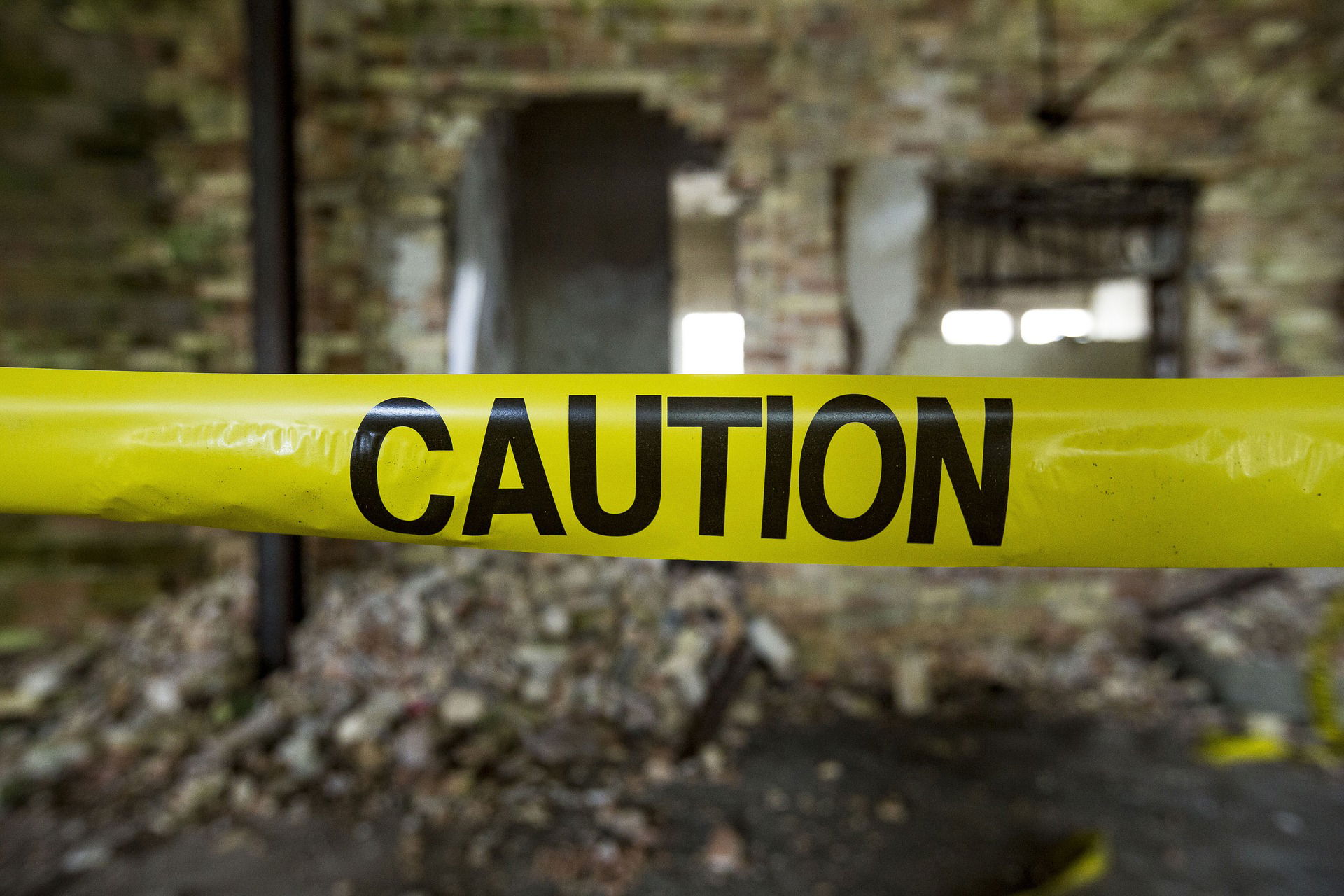Can You Paint Over Asbestos Siding? Safe Upgrade or Dangerous Shortcut?

Key Features:
- Safety of Painting Over Asbestos: Sealing asbestos fibers through painting can enhance both safety and curb appeal.
- Surface Preparation: Proper preparation methods are crucial to avoid disturbing asbestos fibers.
- Alternatives to Painting: Options like encapsulation or full siding replacement should be considered depending on the condition of the asbestos siding.
The Big Question About Asbestos Siding: Can You Paint Over It?
When dealing with older homes, especially those built before the 1980s, asbestos siding is a common concern. Homeowners often ask, “Can you paint over asbestos siding?” It’s a valid question—on one hand, asbestos poses health risks when disturbed, but on the other hand, the siding itself can remain functional for decades if properly maintained. Painting is one potential solution, but before diving into that, let’s take a closer look at the factors to consider.
What Is Asbestos Siding and Why Is It a Concern?
A Brief History of Asbestos Siding
To understand why this question is so relevant, you first need to know what asbestos siding is. In the mid-20th century, asbestos was widely used in building materials due to its durability, fire resistance, and affordability. Asbestos siding, in particular, was a popular choice for exterior cladding because it required minimal maintenance and held up well against weathering.
However, by the 1970s, the health risks associated with asbestos exposure became widely known. When asbestos fibers become airborne and are inhaled, they can cause severe lung conditions, including asbestosis, mesothelioma, and lung cancer. These dangers led to the discontinuation of asbestos in construction materials and a growing concern for homeowners with asbestos-containing products still intact on their properties.
Identifying Asbestos Siding on Your Home
Before answering, it’s important to confirm whether you have asbestos siding. Older homes, especially those built between the 1920s and 1980s, are the most likely candidates. Asbestos siding has a unique look—usually in rectangular shingles with a wavy or pressed wood-grain texture. However, asbestos can be mistaken for other fiber cement products, so it’s essential to get professional testing done if you’re unsure.
Testing can confirm the presence of asbestos and help determine whether the material has deteriorated or remains stable. If the siding is in good condition and poses no immediate risk of fiber release, you may consider painting as a viable option to improve the appearance and protect the siding.
Things to Know:
- Asbestos Safety: Disturbing asbestos siding can release harmful fibers, so caution is necessary during any preparation or painting process.
- Primer Is Essential: Use a high-quality bonding primer to ensure the paint adheres well to asbestos siding.
- Alternatives Exist: In cases where asbestos is heavily damaged, encapsulation or complete removal might be the safer, long-term solution.
- Environmental Regulations: Be aware of local regulations for handling asbestos before starting your project.
The Safety of Painting Over Asbestos Siding
When dealing with asbestos siding, many homeowners are understandably concerned about safety and cost. One question that often arises is: Is it safe to paint over asbestos siding? The short answer is yes, but with certain precautions. Painting over asbestos siding can be an effective way to encapsulate the material, preventing the release of dangerous fibers while improving the look of your home. Let's explore both the benefits and risks involved.
The Benefits of Painting
Can you paint over asbestos siding safely? Absolutely—and there are several advantages to doing so. One of the key benefits is that painting seals in the asbestos fibers, preventing them from becoming airborne. This creates a protective barrier that helps maintain the integrity of the siding, especially if it’s already in good condition.
Another major advantage is the cost savings. Asbestos removal is not only time-consuming but can also be extremely expensive due to the need for specialized handling and disposal. By choosing to paint instead of removing the siding, homeowners can save thousands of dollars while still maintaining a clean, updated exterior.
Painting also allows for a curb appeal boost. Asbestos siding, while durable, often loses its aesthetic appeal over time, becoming faded or discolored. A fresh coat of paint can give your home an instant facelift, making it look more modern without the hassle of a full siding replacement.
The Risks Involved
However, painting over asbestos siding isn’t without its risks. One of the most significant dangers comes during the preparation phase. If the asbestos siding is cracked or damaged, or if improper techniques like power washing are used, asbestos fibers can become airborne. These fibers pose serious health risks when inhaled, so it’s crucial to handle the material carefully.
Even when painting over asbestos siding, it's essential to follow proper safety precautions. This includes wearing protective gear, such as masks and gloves, and ensuring that no harsh or abrasive methods are used that could disturb the asbestos material. Power washing, in particular, is a big no-no. The force of the water can easily break the material and release fibers, turning a painting project into a hazardous situation.
How to Safely Paint Over Asbestos Siding
Once you’ve decided that painting over asbestos siding is the right choice, the next step is to ensure the process is done safely and effectively. Below is a guide to help you navigate the preparation, painting, and application stages.
Preparing the Surface
Preparation is perhaps the most critical phase when dealing with asbestos siding. Since asbestos becomes dangerous when disturbed, it’s important to follow gentle cleaning methods. Instead of power washing, use a mild detergent and a soft-bristle brush to clean the surface. This will remove dirt, mold, and mildew without risking fiber release.
Once cleaned, it’s essential to apply a high-quality bonding primer. This ensures that the paint adheres properly to the surface and helps provide an additional layer of protection. A bonding primer also makes the final coat of paint smoother and more durable, leading to better long-term results.
Choosing the Right Paint
Not all paints are created equal, especially when it comes to painting asbestos siding. To ensure durability and flexibility, it’s recommended to use acrylic latex paint. This type of paint is ideal for exterior surfaces, offering weather resistance and flexibility that helps prevent cracking or peeling over time.
When choosing paint, make sure it is designed for exterior use. Asbestos siding is often exposed to the elements—rain, wind, sun—and the right paint will help it withstand these conditions for longer periods. Opt for high-quality exterior paint to ensure longevity and even coverage.
Application Techniques
When applying paint to asbestos siding, you’ll want to use a brush or roller instead of a sprayer. Sprayers can sometimes create too much pressure and risk disturbing the asbestos material. Using a brush or roller allows for more control and ensures that the paint is applied evenly without harming the siding.
To achieve the best results, apply multiple thin coats rather than one thick coat. This approach ensures better adhesion and helps prevent dripping or uneven coverage. Allow each coat to dry fully before applying the next to create a smooth, long-lasting finish.

Alternatives to Painting Asbestos Siding
When it comes to asbestos siding, painting is a common and cost-effective option to enhance appearance while encapsulating potentially hazardous fibers. However, it’s not the only approach. Depending on the condition of your asbestos siding and your long-term goals, other alternatives, such as encapsulation or full replacement, may be more appropriate.
Encapsulation
Encapsulation involves sealing the asbestos siding with a protective coating, effectively “locking in” the fibers to prevent them from becoming airborne. It’s a non-invasive solution that doesn’t disturb the asbestos, making it a safer alternative for those who want to avoid the risks associated with removal or heavy sanding.
Encapsulation is particularly beneficial when the asbestos siding is intact but aging. For example, if the surface is faded or mildly cracked but the underlying structure is sound, applying a specialized sealant can restore the appearance while protecting the asbestos. These sealants are designed to bond tightly to the material, creating a barrier that lasts for years, even in harsh weather conditions.
That said, encapsulation is not always a one-size-fits-all solution. If the siding is heavily deteriorated, with cracks, chips, or visible damage that could expose asbestos fibers, encapsulation may not be sufficient. In such cases, encapsulation might be a short-term fix, and addressing the underlying structural issues will likely become necessary down the road.
Full Replacement
For homeowners seeking a permanent solution, full replacement of the asbestos siding is another viable option. Removing asbestos entirely eliminates the health risks associated with the material, and it can allow for a fresh start in terms of your home’s exterior. Plus, replacing asbestos siding can significantly boost the property’s value, as buyers tend to shy away from homes with known asbestos-containing materials.
However, removal is not without its challenges. The cost of asbestos removal can be substantial, as it must be handled by licensed professionals trained in proper asbestos abatement techniques. Improper handling of asbestos materials can release harmful fibers into the air, posing serious health risks. Therefore, it’s essential to work with a licensed abatement company to ensure that the removal process adheres to federal and state safety guidelines.
In addition to the financial cost, full replacement requires more time and preparation compared to painting or encapsulation. The process includes removing the existing siding, disposing of it in accordance with hazardous material regulations, and installing new siding. While this can be a more complex project, it results in a clean slate for your home’s exterior and complete removal of the asbestos threat.
Full replacement is ideal for properties where the asbestos siding is severely damaged or deteriorating. When the asbestos material is beyond the point of encapsulation or repainting, replacement is often the safest and most effective route. It also opens up new opportunities for updating your home’s aesthetic with modern, energy-efficient materials that could reduce future maintenance costs.
In Our Experience:
"When it comes to asbestos siding, painting can be a practical solution if removal isn’t feasible. However, safety comes first. We always recommend using proper protective gear and following the necessary steps to avoid disturbing asbestos fibers. In cases of damaged or deteriorating siding, encapsulation or replacement by licensed professionals is often a better option."
Legal and Environmental Considerations
Understanding the Regulations
When it comes to handling asbestos, the first step is understanding the legal landscape. Asbestos is considered a hazardous material, and there are strict federal, state, and local regulations governing its handling, whether you're encapsulating it, painting over it, or opting for full removal. The Environmental Protection Agency (EPA) provides guidelines on how to manage asbestos-containing materials, but it’s crucial to also check with your local health and safety departments for region-specific rules.
One thing to note is that asbestos removal is often tightly regulated. If the siding is in poor condition or damaged, you might not be legally permitted to paint or encapsulate it without first consulting professionals. In fact, in some areas, even encapsulation must be done by a licensed asbestos contractor to ensure compliance with health and safety standards. Painting may seem like an easy DIY option, but violating asbestos regulations can result in hefty fines or worse, risk your family’s health.
A useful resource for checking your local regulations is your state environmental protection agency or the EPA’s Asbestos Information Guide. These can provide clear instructions on what is permissible and under what circumstances. Before starting any project involving asbestos, it's always a good idea to have a licensed inspector assess the material and provide recommendations on the safest approach.
Environmental Impact
Asbestos siding poses not only health risks but also environmental challenges. Improperly handling or disturbing asbestos can release microscopic fibers into the air, which, if inhaled, can lead to serious respiratory illnesses. This is why power washing or sanding asbestos siding should be strictly avoided unless done by trained professionals with the correct safety gear. Even small amounts of dust can travel long distances, contaminating nearby areas and putting others at risk.
When painting asbestos siding, the environmental risks are typically lower, especially if the siding is encapsulated properly. However, it's essential to handle any waste material carefully. Brushes, rollers, rags, and other supplies that come into contact with the asbestos should be disposed of according to hazardous waste disposal guidelines. This is where a professional can provide invaluable guidance, as they can safely contain and dispose of waste, ensuring you don’t inadvertently contribute to environmental contamination.
For those looking to dispose of waste safely, check your local hazardous waste disposal facilities or services. These facilities can guide you on how to package and label asbestos-contaminated materials. By taking the right steps, you’ll not only protect the environment but also ensure that your project complies with all safety standards.
Making an Informed Decision
Weighing the Risks and Benefits
When it comes to dealing with asbestos siding, the decision to paint or encapsulate shouldn't be taken lightly. On the one hand, painting over asbestos siding can be a cost-effective and safe way to extend the life of your home’s exterior, provided the siding is in good condition and handled correctly. It can help seal the asbestos fibers, improve curb appeal, and avoid the significant costs of asbestos removal.
On the other hand, painting or encapsulating asbestos comes with its risks. If the siding is already damaged, disturbed, or deteriorating, attempting to paint it could release dangerous fibers into the air. In such cases, full replacement or professional encapsulation may be necessary.
Final Thoughts
Before moving forward, it’s crucial to consult professionals who are experienced in dealing with asbestos siding. Licensed contractors can evaluate the condition of your siding, recommend the best course of action, and ensure that your home improvement project complies with local regulations and health standards.
Painting over asbestos siding can be a safe upgrade under the right circumstances, but if not handled properly, it could also become a dangerous shortcut. Always prioritize health, safety, and environmental considerations when working with asbestos materials.
Feel free to share your experiences or ask questions in the comments below, especially if you’ve gone through a similar project. Hearing from others can help foster a community of shared knowledge, making this challenging decision easier for everyone.
Do You Have Questions? Give Us A Call With Any & All! 503-389-5758
-
People Also Ask:
Can you safely paint over asbestos siding?
Yes, painting over asbestos siding can be done safely if proper precautions are followed, such as gentle surface preparation and avoiding power washing to prevent disturbing asbestos fibers.
What type of paint is best for asbestos siding?
Acrylic latex paint is recommended for asbestos siding as it is durable, flexible, and designed for exterior use, providing long-lasting protection.
Should I remove asbestos siding or paint over it?
While painting over asbestos siding can be a cost-effective solution, full removal is the only way to completely eliminate asbestos risks. Consult a licensed professional for advice based on the condition of your siding.
-
Subscribe to Our Blog & Elevate Your DIY Game! Never miss a beat! Join the Lightmen Painting community and get the latest insights on painting, DIY projects, and expert tips delivered straight to your inbox.
Have something specific in mind? We’d love to hear your ideas! Let us know what topics or projects you’re curious about—your input shapes our next posts.
Subscribe now and let’s transform your spaces together!
Get $3000 in personal assistant credits from Magic .com
^ Click Our Logo Above To Redeem ^
If your in the Portland, Or. area and need advice or a free no obligation estimate call us at 503-389-5758 or email scheduling@lightmenpainting.com
Shout Out
Celebrating Bogleheads: A Community for Smart Financial Decisions
From the team at Lightmen Painting, we extend our highest praise to Bogleheads for their commitment to empowering individuals with financial knowledge and advice. Just as we strive for excellence in our painting services, Bogleheads provides a platform for thoughtful discussions and shared wisdom on investing, home improvement, and more. Their dedication to fostering a knowledgeable community aligns with our mission to deliver top-tier solutions that enhance and beautify living spaces.
Thanks for stopping by Lightmen Daily! Stay tuned for more practical tips and expert advice on making your painting projects flawless, from wall to floor!
Definitions
- Asbestos Siding: A fire-resistant siding material used in mid-20th-century homes, now considered hazardous due to its fibrous content.
- Encapsulation: A method of covering asbestos siding with a sealant to prevent fibers from becoming airborne.
- Acrylic Latex Paint: A type of paint ideal for asbestos siding due to its flexibility and weather resistance.
- Surface Preparation: The process of cleaning and priming siding to ensure paint adhesion without disturbing asbestos.
- Asbestos Removal: The complete elimination of asbestos siding by licensed professionals, which removes health risks entirely.
- Primer: A preparatory coating applied to improve paint adhesion and seal the surface.
- Bonding Primer: A primer specifically designed to adhere to difficult surfaces, ensuring long-lasting paint application.
- Health Risks: The potential for asbestos fibers to cause respiratory illnesses when inhaled, especially if disturbed.
- Environmental Impact: The effects of mishandling asbestos, which can lead to contamination of soil and air.
- Regulations: Legal guidelines governing how asbestos can be handled, encapsulated, or removed.
Lightmen Painting Serving: Portland, Tigard, Lake Oswego, Tualatin, West Linn, Milwaukie, Sherwood, Happy Valley, Oregon City, Beaverton, Hillsboro, Gresham -Trade Partners-

